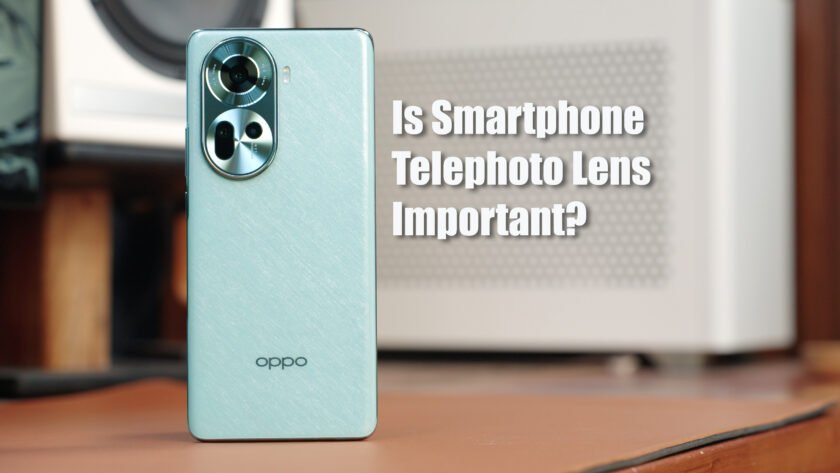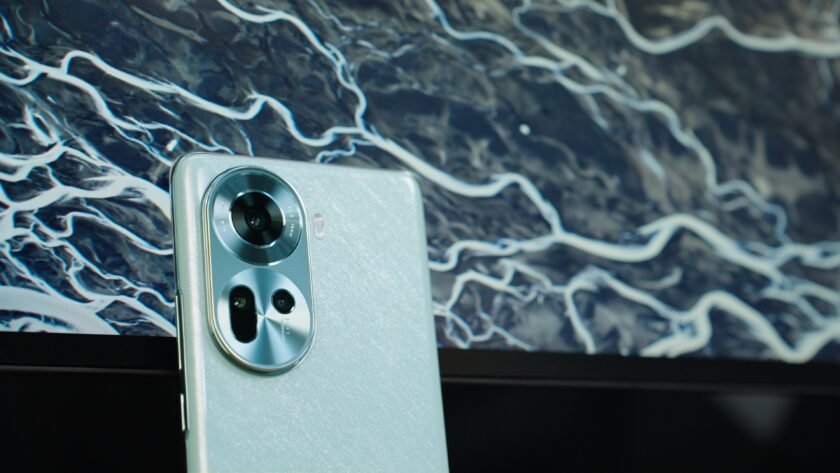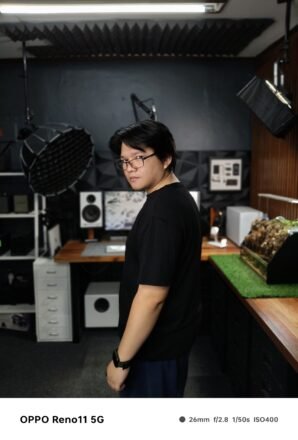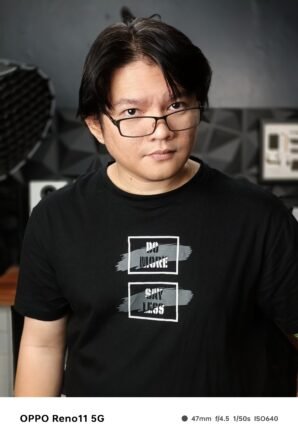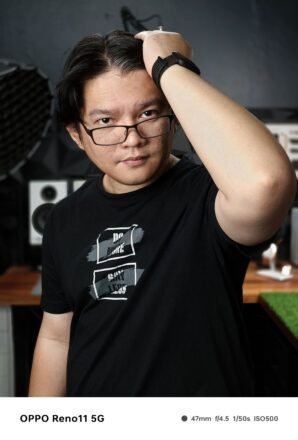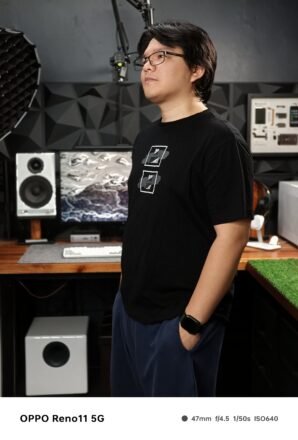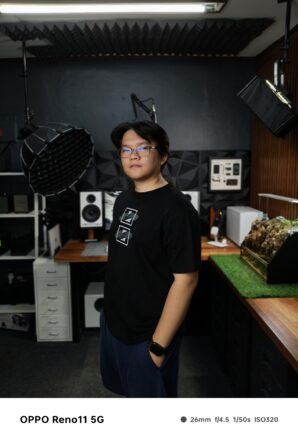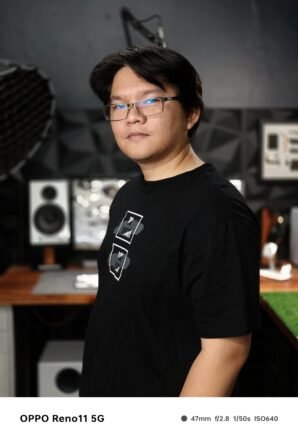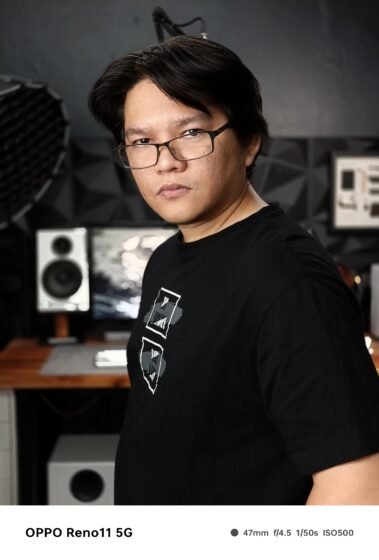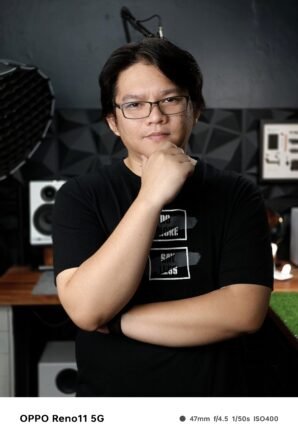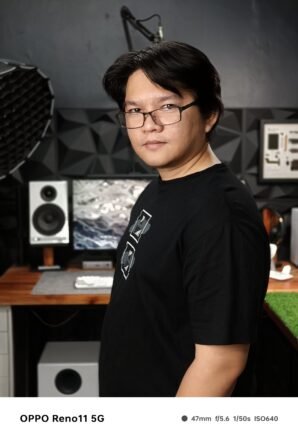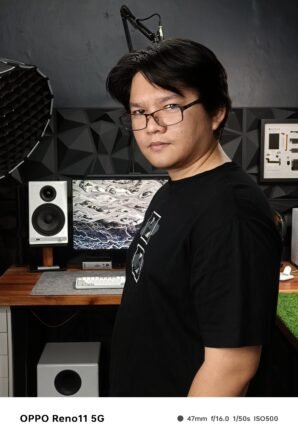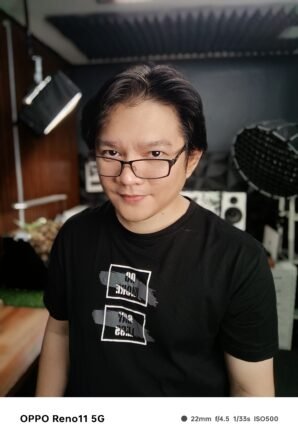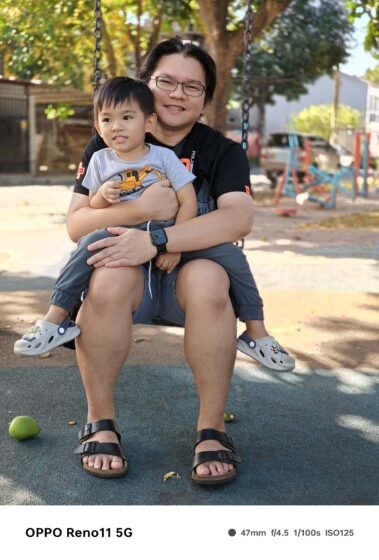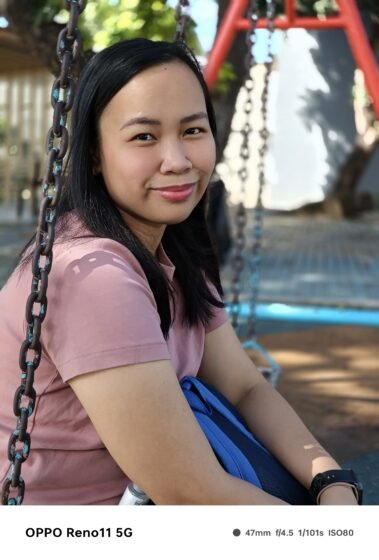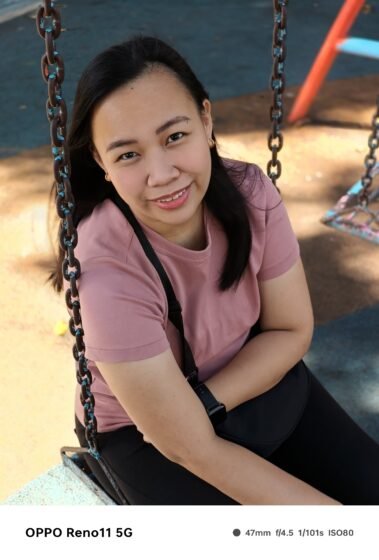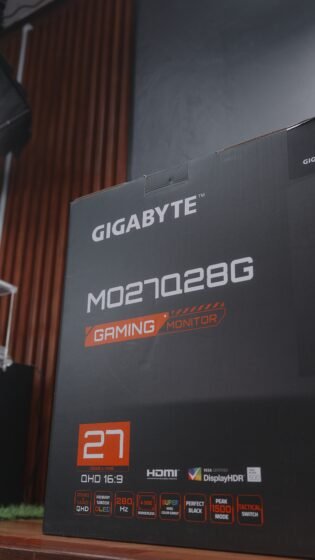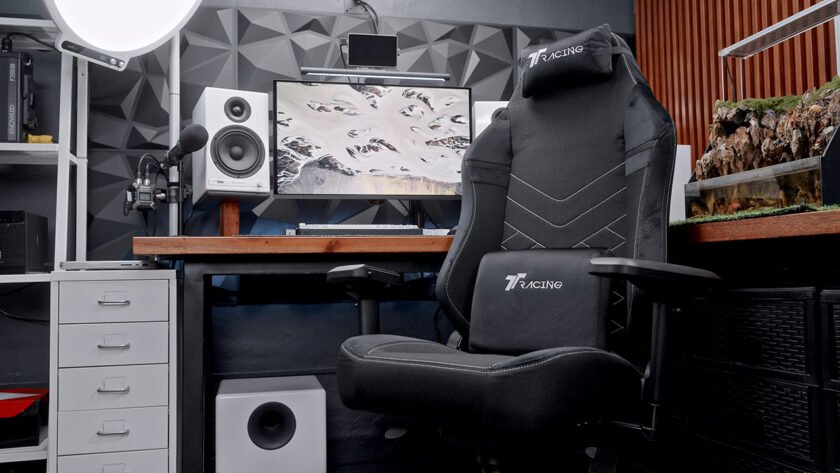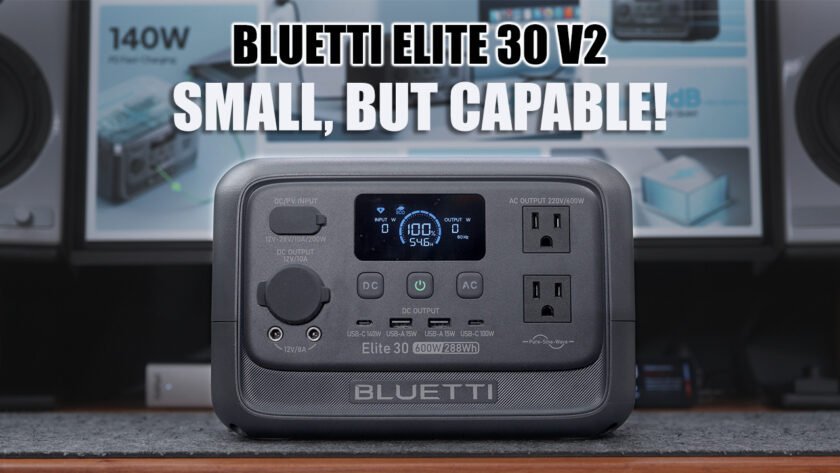Today, I’m going to share with you why a smartphone needs to have a pretty good telephoto lens. Not those with extreme planetary zoom capabilities or those with super high megapixel count, but a telephoto lens with just the right amount of megapixels, perfect focal length for portrait shots, and decent software and image processing to back it up. I’m talking about the Portrait Expert, The OPPO Reno11 series 5G.
Now, as I alluded to earlier, The OPPO Reno11 5G doesn’t flex a telephoto lens with out-of-this-world zoom capabilities which to be honest most of the time is just pure gimmick anyway, but instead, it boasts a perfectly usable telephoto lens with a familiar 47mm focal length which is right around the standard 50mm focal length that is ideal for portrait shots.
50mm is ideal because it brings versatility and ease of use while providing the perfect natural-looking portraits without much distortion and with enough background separation. And with a relatively wide aperture of F2.0 and a 1/2.74” sensor size, rest assured that it can capture an ample amount of light and provide that balance of fast shutter speed and low ISO values resulting in cleaner and sharper images. Not to mention its 32MP count partnered with a Sony IMX709 sensor.
Here let me show you some sample shots.
The following images were taken indoors with a couple of studio lights turned on and shot using the default settings of the portrait mode unless otherwise specified.
There are two focal lengths available under the Portrait mode, the wider 26mm which uses the 50MP main camera, and the 47mm which uses the 32MP telephoto lens.
As you can tell, both can take pretty good portrait shots. The main camera at its default settings of F2.8 delivers a smoother image overall and captures more area around the subject, while the telephoto lens at its default settings of F4.5 delivers a more compressed image and highlights the subject very well while still providing enough background separation or bokeh.
This is ideal for both half-body and close-up portrait shots.
At their default settings, the Telephoto lens offers better dynamic range and more details, especially on the highlights.
Of course, you can tweak the settings to try and match them but at its out-of-the-box settings, the telephoto lens is the clear winner for portrait shots.
I swapped the aperture settings of the two sample images below with the 26mm wide using F4.5 aperture and the 47mm telephoto using F2.8 aperture.
I can even say that the telephoto lens’s sharpness is too much for my skin since my face is not the smoothest. But thankfully, with the Pro-Grade portrait mode, I can tweak and enhance this before or even after taking the shot.
Now, I don’t necessarily recommend this, and personally, I wouldn’t do it on my photos, but you can even enhance not just the smoothness of your skin but also the shape and attributes of your face to make it more flattering. And it does an amazing job making it close to reality and not that noticeable at first glance especially using the default retouch option.
Honest disclaimer, these two sample shots are the only images that I edited in post. All sample shots are straight out of the camera at default settings.
Now, here are some sample shots in different aperture settings so that you can have an idea of how the bokeh or background separation looks.
Well, the 32MP Selfie camera isn’t a slouch either, you can definitely take some awesome portrait selfie shots using this, albeit with a wider 22mm focal length and a default retouch setting out of the box resulting in more flattering portraits. The exposure and dynamic range are really good with a very natural skin tone. And even with the default retouching applied, my face still looks relatively natural and doesn’t look like plastic.
Now, for the longest time, my priority on smartphone cameras has always been the ultrawide angle lens because I like to shoot landscapes more than portrait shots. However, since becoming a dad, I found myself taking more portrait shots of our son than anything else. So my interest in smartphone cameras has since then shifted.
I now appreciate the telephoto lens more than the ultrawide angle lens.
And to answer our question, Is a Smartphone Telephoto Lens Important? I would say yes. Granted, you can walk closer using the main camera to achieve the same range, but there’s no denying the fact that you won’t be able to replicate the background compression and separation a dedicated telephoto lens can offer.
Not to mention the minimal distortion that is absolutely crucial for a pleasing portrait shot. So yeah, having a decent telephoto lens with a proper focal length like what the OPPO Reno11 5G has is super important.
Now, the telephoto lens of the OPPO Reno11 5G is even better outdoors with natural light as it can shoot with faster shutter speed and lower ISO levels.
The OPPO Portrait Engine not only does a great job on facial recognition separating it from the background with a natural-looking bokeh, but it can also accurately target that perfect exposure and white balance for a more natural skin tone. The dynamic range is also outstanding in balancing both the shadows and highlights.
You can also take advantage of the Telephoto lens not just for portraits but for still life as well getting the same benefits of compression, minimal distortion, and an overall detailed image.
The telephoto lens will also allow you to separate your subjects or focus on the small details that you otherwise won’t be able to accomplish with the main camera and definitely won’t with the ultrawide angle lens.
Overall, as I’ve pointed out earlier, a good telephoto lens doesn’t necessarily need to have all the extra bells and whistles and gimmicky features. It only needs a proper focal length for portrait shots, a wide aperture, and a decent sensor which the telephoto lens of the OPPO Reno11 5G thankfully has.
Price, Availability, and Promotions
The OPPO Reno11 Series 5G including the OPPO Reno11 Pro 5G variant is now available here in the Philippines with the standard variant priced at Php 24,999 and the Pro variant priced at Php 31,999. Both are available in all OPPO-authorized offline and online stores including OPPO’s official Shopee, Lazada, and TikTok shops. You can also get both with a plan from Globe and Smart or via installment plans through Home Credit and participating Credit Cards.
In addition, customers can also take advantage of the following benefits from the My OPPO App until supplies last:
- 4,500 Mabuhay Miles from Philippine Airlines
- 100 PICKUP Points from PICKUP COFFEE
- Billow Minis from BASH
- Php 200 voucher from Bistro Group
- Php 100 gift code from Zalora
- Php 100 gift code from Sodexo
- Exclusive to new My OPPO users – Php 200 gift code from Zalora
- Exclusive to old My OPPO users – Php 500 gift card from Sodexo.
This article is in partnership by OPPO Philippines

The Broll who always got your back online!

